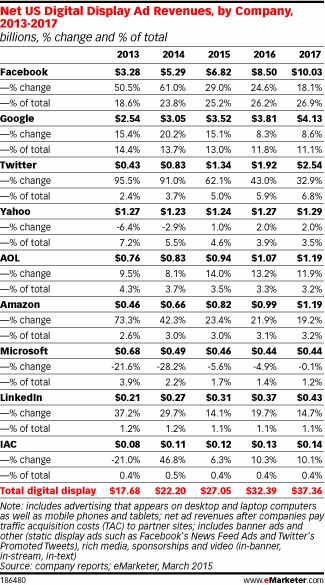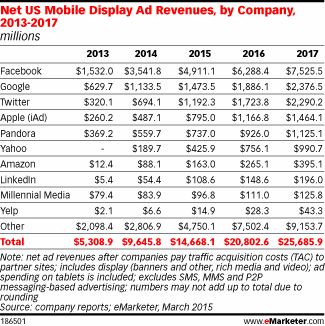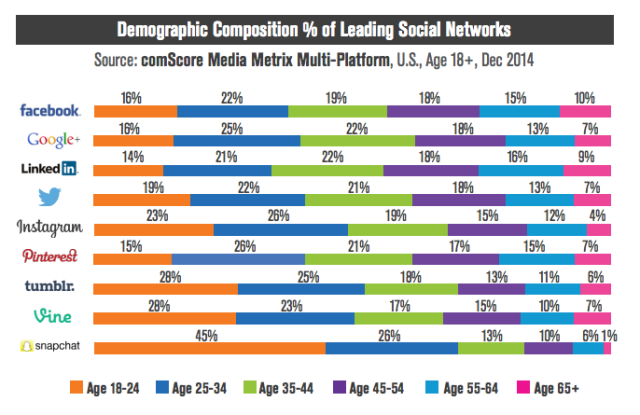Spending on digital display advertising continues to flourish, as companies intend to spend as much as over $27 billion this year alone. However, new figures from eMarketer indicate that the number will continue to grow over the next couple of years — and social sites like Facebook and Twitter will lead the charge.

By 2017, according to the site, US digital display ad spending will reach $37.36 billion — a $10 billion increase in just two years’ time — and Facebook and Twitter will account for a third of that market, over 33 percent. That’s increase as well, since both sites have a 30.2 percent grip for this year in itself.
Facebook’s digital display ad revenue is quite impressive, set to reach $6.82 billion this year, which will account for over 25 percent of the overall market. Twitter may be behind, but it’s seeing profit as well, with revenues of $1.34 billion, and five percent of the overall market. By 2017, both these sites will see a minor increase, with Facebook accounting for 26.9 percent, and Twitter at 6.8 percent.
Even with its smaller numbers, Twitter will be able to surpass Yahoo in digital display ad revenues for the first time. Yahoo will still see positive results from its campaign, with 4.6 percent of the market for this year, but that’s a drop from the 5.5 percent it had last year, and the 7.2 percent it had in 2013.
Google will remain healthy in digital display ad funds, with 13 percent for this year. However, it’s worth noting that it’s a drop from the 13.7 percent reported last year, and eMarketer estimates it’ll dip even further, down to 11.1 percent, by 2017.
So where are all these changes coming from The report indicates that mobile advertising plays a big part of it, with an increase to $14.67 billion — over $5 billion more than what was spend last year ($9.65 billion). Desktop display ad spending has seen a drop by comparison, going down to $12.38 billion. That’s still a reasonable spending amount, but mobile is taking over.
Facebook will see $5 billion this year alone from mobile ad revenues, with Twitter following closely behind with $1.19 billion — accounting for 90 percent of its overall ad revenues. In just a couple years’ time, both of these numbers will grow, with Facebook accounting for $7.53 billion, and Twitter earning $2.29 billion — and continuing to hold a lead over both Yahoo and Google.

Digital display ads will be something to watch as far as trends and effectiveness are concerned.


